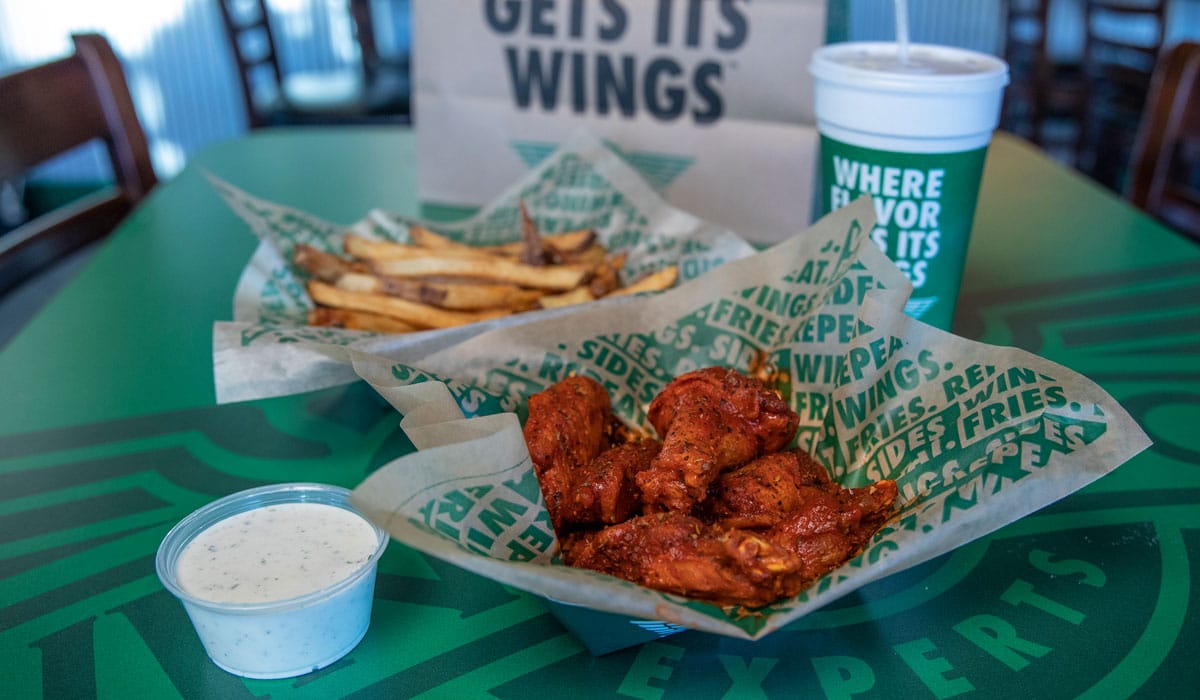Wingstop is bringing in more customers than it ever has. In Q4, the fast casual experienced its highest guest acquisition periods on record. These new consumers are higher income, less likely to have children at home, showcase a higher frequency, and most importantly, are engaging with Wingstop digitally.
That last point is crucial as the chain approaches the launch of its proprietary online ordering platform, MyWingstop.
The fast casual has worked on MyWingstop for years and is putting forth $50 million to launch it. CEO Michael Skipworth said the pilot is “going great” and that the fast casual is on schedule to roll out MyWingstop systemwide beginning in April. The chain is expecting the platform to do a better job of unlocking first-party data and creating a hyper-personalized experience for customers. Wingstop believes these successes will in turn impact conversion, frequency, and retention.
The brand has earned more than $2 billion in digital sales in the past 12 months and increased mix to 67 percent compared to 63 percent a year ago. The user base comprises over 40 million guests.
READ MORE:
Wingstop’s $50 Million Tech Investment Comes to Life
Is a Loyalty Program in Wingstop’s Future?
Wingstop Puts ‘Foot on the Gas’ and Doesn’t Let Up
Skipworth noted there will be some consumer-facing elements where they “see a different and a little bit more of an innovative and relevant customer ordering experience,” but most of the work is behind the scenes in terms of infrastructure and technology.
“It’s our investment that we’ve made in building our own e-commerce and digital experience that’s customized specifically for Wingstop’s business,” Skipworth told investors during the chain’s Q4 earnings call. “And we’ve built that in a very modern architecture or modern technology stack that allows us to focus on investing in the strategic component parts, and then where it makes sense, leveraging third parties and other elements of the tech stack.”
Wingstop will bump franchisees’ advertising fund contribution rate from 5 percent to 5.3 percent to cover ongoing operating expenses associated with the MyWingstop platform.
It will start as a U.S.-only product. The international business isn’t big enough for the platform to make sense yet, according to Skipworth.
“I think over time, as they scale, we can evaluate whether or not it makes sense to make this kind of investment to scale this MyWingstop digital business or platform outside of the U.S.,” Skipworth said.
The CEO wants international restaurants to follow the U.S. playbook and build their digital business by using a strategic partner like domestic stores have done with Olo for many years.
Although the online ordering platform partnership between Olo and Wingstop is over, the two sides aren’t abandoning their relationship. The brand is using Olo to help with integrations around the automated voice ordering phone system it’s been testing in 150-plus restaurants.
“We are happy with what we are seeing in the test,” said CFO Alex Kaleida. “These large language models continue to progress, and we are enhancing that ordering experience. And I think it’s a good example of investments of opportunities in our best-in-class digital platform and something that can help us achieve our aspirational goal of digitizing every transaction. So, we view it as another lever for us on our path to AUVs scaling beyond $2 million.”
The upcoming innovations are a big reason why Skipworth isn’t worried about more quick-service chains entering the wing business. The most notable one is Popeyes, which launched wings in November and highlighted its offerings in a Super Bowl commercial earlier in February. Whataburger announced that it was testing boneless “WhataWings” as well.
Typically, when other companies promote wings, it has served as a benefit to Wingstop, said Skipworth.
“In fact, if consumers are aware of Wingstop and someone makes wings top of mind, there is really not a decision tree,” the CEO said. “They go to Wingstop versus that other brand. And so historically, we have seen that as a tailwind to our business. And so as we think about us operating in the category of one, that’s part of it. I also think building on top of that is the strength of our unit economics, our simple operating model.”
In the long run, the chain views MyWingstop and AI voice ordering as opportunities to enhance profitability and unit economics, which is already a strong suit for the chicken chain. U.S. same-store sales lifted 21.2 percent in Q4 year-over-year and 18 percent compared to 2022—almost all of it driven by transaction growth. Last year marked the 20th straight year of positive comps for Wingstop. Also, AUV is above $1.8 million and the upfront investment to open a restaurant is still less than $500,000 and less than a two-year payback.
The returns have led to a record development pipeline of roughly 1,400 restaurant commitments under franchise agreements. That includes nearly 600 new commitments during 2023 alone. The company opened an unprecedented 255 net new stores last year, and 95 percent were from existing franchisees. In Q4, the brand opened 115 net new restaurants, which represents over one restaurant a day.
As of December 30, there were 2,214 Wingstop restaurants systemwide. This included 1,926 restaurants in the U.S. and 288 international franchised restaurants. This year, the fast casual projects 270 net store openings and mid-single-digit domestic same-store sales growth.
“We’re confident in our ability to continue to drive the business and advance our growth strategies towards our goal of exceeding the AUVs of north of $2 million,” Skipworth said. “That said, we know that we’re growing on top of a record year, but yet have confidence in our ability to deliver on our three to five-year outlook. When we compare that on a two-year basis, we know that’s remarkably strong compared to the industry and something we’re pretty proud of.”







